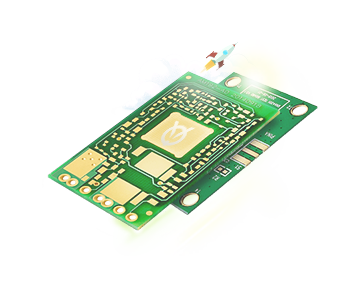objc源码中NSObject如何进行初始化
+ alloc 和 - init 这一对我们在 iOS 开发中每天都要用到的初始化方法一直困扰着我, 于是笔者仔细研究了一下 objc 源码中 NSObject 如何进行初始化。
在具体分析对象的初始化过程之前,我想先放出结论,以免文章中的细枝末节对读者的理解有所影响;整个对象的初始化过程其实只是 为一个分配内存空间,并且初始化 isa_t 结构体的过程。
alloc 方法分析
先来看一下 + alloc 方法的调用栈(在调用栈中省略了很多不必要的方法的调用):
id _objc_rootAlloc(Class cls)
└── static id callAlloc(Class cls, bool checkNil, bool allocWithZone=false)
└── id class_createInstance(Class cls, size_t extraBytes)
└── id _class_createInstanceFromZone(Class cls, size_t extraBytes, void *zone, bool cxxConstruct, size_t *outAllocatedSize)
├── size_t instanceSize(size_t extraBytes)
├── void *calloc(size_t, size_t) └── inline void objc_object::initInstanceIsa(Class cls, bool hasCxxDtor)
这个调用栈中的方法涉及了多个文件中的代码,在下面的章节中会对调用的方法逐步进行分析,如果这个调用栈让你觉得很头疼,也不是什么问题。
alloc 的实现
+ (id)alloc {
return _objc_rootAlloc(self);
}
alloc 方法的实现真的是非常的简单, 它直接调用了另一个私有方法 id _objc_rootAlloc(Class cls)
id _objc_rootAlloc(Class cls) {
return callAlloc(cls, false/*checkNil*/, true/*allocWithZone*/);
}
这就是上帝类 NSObject 对 callAlloc 的实现,我们省略了非常多的代码,展示了最常见的执行路径:
static id callAlloc(Class cls, bool checkNil, bool allocWithZone=false) {
id obj = class_createInstance(cls, 0);
return obj;
}
id class_createInstance(Class cls, size_t extraBytes) {
return _class_createInstanceFromZone(cls, extraBytes, nil);
}
对象初始化中最重要的操作都在 _class_createInstanceFromZone 方法中执行:
static id _class_createInstanceFromZone(Class cls, size_t extraBytes, void *zone, bool cxxConstruct = true, size_t *outAllocatedSize = nil) {
size_t size = cls-》instanceSize(extraBytes);
id obj = (id)calloc(1, size);
if (!obj) return nil;
obj-》initInstanceIsa(cls, hasCxxDtor);
return obj;
}
对象的大小
在使用 calloc 为对象分配一块内存空间之前,我们要先获取对象在内存的大小:
size_t instanceSize(size_t extraBytes) {
size_t size = alignedInstanceSize() + extraBytes;
if (size 《 16) size = 16;
return size;
}
uint32_t alignedInstanceSize() {
return word_align(unalignedInstanceSize());
}
uint32_t unalignedInstanceSize() {
assert(isRealized());
return data()-》ro-》instanceSize;
}
实例大小 instanceSize 会存储在类的 isa_t 结构体中,然后经过对齐最后返回。
Core Foundation 需要所有的对象的大小都必须大于或等于 16 字节。
在获取对象大小之后,直接调用 calloc 函数就可以为对象分配内存空间了。
isa 的初始化
在对象的初始化过程中除了使用 calloc 来分配内存之外,还需要根据类初始化 isa_t 结构体:
inline void objc_object::initIsa(Class cls, bool indexed, bool hasCxxDtor) {
if (!indexed) {
isa.cls = cls;
} else {
isa.bits = ISA_MAGIC_VALUE;
isa.has_cxx_dtor = hasCxxDtor;
isa.shiftcls = (uintptr_t)cls 》》 3;
}
}
上面的代码只是对 isa_t 结构体进行初始化而已:
union isa_t { isa_t() { }
isa_t(uintptr_t value) : bits(value) { }
Class cls;
uintptr_t bits;
struct {
uintptr_t indexed : 1;
uintptr_t has_assoc : 1;
uintptr_t has_cxx_dtor : 1;
uintptr_t shiftcls : 44;
uintptr_t magic : 6;
uintptr_t weakly_referenced : 1;
uintptr_t deallocating : 1;
uintptr_t has_sidetable_rc : 1;
uintptr_t extra_rc : 8;
};
};
init 方法
NSObject 的 - init 方法只是调用了 _objc_rootInit 并返回了当前对象:
- (id)init {
return _objc_rootInit(self);
}
id _objc_rootInit(id obj) {
return obj;
}
非常好我支持^.^
(0) 0%
不好我反对
(0) 0%
下载地址
objc源码中NSObject如何进行初始化下载
相关电子资料下载
- iOS17.1可能明天发布,iOS17.1主要修复哪些问题? 377
- 华为全新鸿蒙蓄势待发 仅支持鸿蒙内核和鸿蒙系统应用 719
- 苹果手机系统iOS 17遭用户质疑 731
- iPhone12辐射超标?苹果推送iOS 17.1解决此事 750
- 传华为囤积零部件 目标明年智能手机出货7000万部;消息称 MiOS 仅限国内,小米 28208
- 苹果推送iOS17.0.3,解决iPhone15Pro系列存在机身过热 216
- Testin云测兼容和真机服务平台中上线iPhone 15系列手机 208
- 利尔达推出搭载HooRiiOS的Matter模组 145
- 运放参数解析:输入偏置电流(Ibias)和失调电流(Ios) 128
- 昆仑太科发布支持国产飞腾腾锐D2000芯片的开源BIOS固件版本 448



